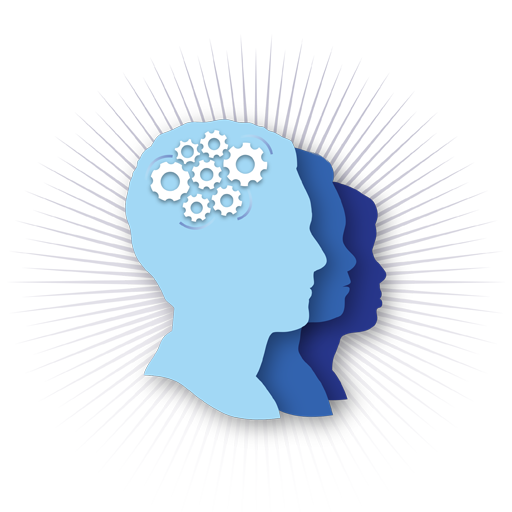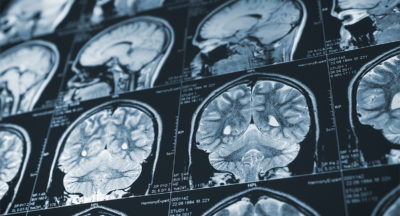
Why Do More Children Seem to Have ADHD Today?
Why Do More Children Seem to Have ADHD?
By Ari Goldstein, Ph.D.
According to a study conducted by Centers for Disease Control and Prevention (CDC) and published in Journal of the American Academy of Child and Adolescent Psychiatry, 6.4 million or 11 percent of US children between the ages of 4 and 17 have ADHD. That’s an increase of over 42 percent between 2003-2004 and 2011-2012.1
The National Human Genome Research Institute of the National Institutes of Health has found that Attention Deficit Hyperactivity Disorder (ADHD) seems to run in families. Recent studies strongly suggest that there may be a genetic component to ADHD with research indicating that this probably involves at least two genes.2 However, although ADHD has probably been part of the spectrum of human behavior since the dawn of humanity, the insistence on labeling those with this condition and trying to control or eliminate ADHD behaviors seems to be a very recent development.
Misdiagnosed or incorrectly defined?
Some educators and doctors have suggested that this jump in the number of cases is simply due to children being misdiagnosed. Currently, diagnosis of ADHD in the U.S. is based on definitions from the Diagnostic and Statistical Manual of Mental Disorders (D.S.M.). In Europe, pediatricians have tended to use the International Classification of Diseases (ICD), which has much stricter guidelines for diagnosing ADHD.3 Over the last few years however, more and more frequently the definitions of the D.S.M. are being used in Europe as well as in the U.S. At the same time, there has been an increased diagnosis of ADHD overseas. This has caused some to speculate that the increase in diagnosed cases of ADHD is simply due to a difference in the way doctors are defining the condition.
In fact, ADHD can be hard to diagnose since many of its symptoms may be put down to normal childish behavior. Occurring three times more often in boys than girls, ADHD is generally first noticed between the age of three and six, with seven being the average age when an official diagnosis is made.4
Diagnosis occurs most often at the same age school begins.
This is when society is most insistent that children conform to the rules of a classroom setting. In the past, before educational institutions created accommodations for children designated with “learning disabilities,” these children were often described as “troublemakers” or “problem children.” When they exhibited the typical symptoms of ADHD – difficulties with sitting quietly, trouble focusing on a task or controlling their anger – they were sent to the principal’s office, put in time out or even suspended from school. Since girls with ADHD seem to internalize their symptoms, appearing withdrawn and inattentive but not disruptive, they were often able to function more successfully in the classroom.
However, in 1991 students with ADHD came under the protection of the Individuals with Disabilities Education Act.5 For the first time, the medical and educational establishments offered children and their parents help instead of punishment for this condition. In addition, an overhaul of the Food and Drug Administration in 1997 resulted in drug companies being able to market drugs to treat ADHD to parents and educators directly. These two developments helped to “normalize” the condition, making it easier for parents to admit their children were having problems and to seek treatment after diagnosis.
More demanding education standards were set soon after.
In her article for the New York Times Magazine, “The Not-So-Hidden Cause Behind the ADHD Epidemic,” Maggie Koerth-Baker sees a direct connection between changes in U.S. legislation for measuring scholastic achievement and the increase in ADHD.
Diagnosed with ADHD in adulthood herself, Koerth-Baker noticed that between fall of 2011 and the spring of 2012, ADHD medication was hard to come by. It seems that the demand for drugs like Ritalin, Adderall and others was significantly outpacing the supply as more and more schoolchildren were being prescribed medication to treat ADHD. Koerth-Baker postulated that the explosion in the rate of diagnosis might be due to sociological factors – especially ones related to education rather than medical ones.
She explains, “The No Child Left Behind Act, signed into law by President George W. Bush, was the first federal effort to link school financing to standardized-test performance.” Yet even before that, various states had been slowly rolling out similar policies on a local level. According to Koerth-Baker, in states with laws that punished or rewarded schools for standardized-test scores, an increase in ADHD diagnoses seemed to follow. This relationship between stricter standards and an increase in ADHD cases held true nationally when just four years after the No Child Left Behind act was implemented, the number of children with ADHD rose by 22 percent.
Koerth-Baker notes parents and teachers may consider a diagnosis of ADHD “a success if the medication improves kids’ ability to perform on tests and calms them down enough so that they’re not a distraction to others.” Quoting Stephen Hinshaw, a professor of psychology at University of California, Berkeley, she suggests that, “’these incentives conspire to boost the diagnosis of the disorder, regardless of its biological prevalence.’”
Yet legislative changes may be only part of the answer.
While recent changes to educational standards by the federal government and attempts of educators to conform to them, may be one of the reasons ADHD is being diagnosed more frequently, many experts feel there is far more to consider. An increase in the incidence of ADHD may also be due to overall changes in the lifestyle of families. Koerthe-Baker puts it this way, “During the same 30 years when ADHD diagnoses increased, American childhood drastically changed. Even at the grade-school level, kids now have more homework, less recess and a lot less unstructured free time to relax and play.”
Kids have too much pressure, not enough playtime.
Mack R. Hicks, Ph.D., also express this view in an article for Psychology Today.6 Hicks claims reliable data shows that children with ADHD do better when they spend more time outside. Unfortunately, he observes, “Children are spending half as much time outdoors as they were before 1992 and 8-18 year old kids spend 7 hours and 38 minutes using entertainment media in a typical day, not including computer time for schoolwork. Only 6% of kids even play outside on their own.”
Is ADHD a “disease of civilization?”
That’s how Emily Deans, MD, describes it in her article, “Sunlight and ADHD.”7 Deans seems to concur with the observations of Koerth-Baker and Hicks, writing “…our expectation that everyone from young children in school to adults working on computers sit around paying close attention all day seems entirely modern. Certainly in the distant past young children played and hunted and gathered alongside their parents, and humans got to do a variety of tasks throughout the day, a lot of it in the sunshine and fresh air.”
Sunlight, or rather the lack of it, may affect ADHD, too.
Both Hicks and Deans agree that sunlight or its absence may further influence the occurrence of ADHD. As Hicks postulates, “New research from the Journal of Biological Psychiatry …suggests that living in States with greater sunshine (solar intensity or SI) may protect against the development of ADHD. There is a wide variation of reported attention deficit disorder from a low of 5.6% in Nevada to a high of 15.6% in North Carolina. Some of this can result from differences in diagnostic practices, but something else may be going on as well.”8
Deans supports this view, citing a new study that “suggests that amount of sunshine in the environment could also play a significant role in changing the risk of having symptoms of the disorder…Genes controlling melatonin signaling and circadian rhythm clock proteins are known to be abnormal in some people with ADHD.” She goes on to observe, “…bright sunlight is known to enhance and reinforce our own natural circadian rhythms, helping us to be alert during the day and to sleep better at night.”9 Since one of the most troubling aspects of ADHD is difficulties in sleeping, the assumption that the more sunshine in your life, the easier it will be to get the rest you need, seems to hold.
A conversation to be continued.
Another cause that parents often ask about as a possible influence on ADHD behaviors is diet. Everything ranging from too much sugar and not enough vegetables to artificial additives in processed foods has been cited by various sources as a factor in either causing ADHD directly or exacerbating it. Since this is such a complex issue, we’ll be dealing with it as a topic on its own in a future blog.
Until then, I hope you’ll use the links to the URLs sited below to learn more about this fascinating subject. If you have any questions or concerns about yourself or family members regarding ADHD, please feel free to contact us.
Whatever the causes of ADHD, the success of neurofeedback in helping patients of all ages deal successfully with this condition is gaining greater recognition every day. If you’d like to learn more about our practice and treatment for ADHD please contact us at (773) 755-1775.
REFERENCES:
1 “ADHD: By the Numbers: Facts, Statistics and You,” Healthline, http://www.healthline.com/health/adhd/facts-statistics-infographic (2014): Accessed April 22, 2017
2 “Introduction,” National Human Genome Research Institute, https://www.genome.gov/10004297/the-adhd-genetic-research-study-at-nih/ (2014): Accessed April 22, 2017
3 M. Koerth-Baker, “The Not-So-Hidden Cause Behind the ADHD,” The New York Time Magazine, http://www.nytimes.com/2013/10/20/magazine/the-not-so-hidden-cause-behind-the-adhd-epidemic.html (2013): Accessed April 22, 2017
4“ADHD: By the Numbers: Facts, Statistics and You,” Healthline, http://www.healthline.com/health/adhd/facts-statistics-infographic (2014): Accessed April 22, 2017
5 M. Koerth-Baker, “The Not-So-Hidden Cause Behind the ADHD,” The New York Time Magazine, http://www.nytimes.com/2013/10/20/magazine/the-not-so-hidden-cause-behind-the-adhd-epidemic.html (2013): Accessed April 22, 2017
6 M. Hicks, Ph.D., “Why the Increase in ADHD?,” Psychology Today https://www.psychologytoday.com/blog/digital-pandemic/201308/why-the-increase-in-adhd (2013): Accessed April 22, 2017
7 E. Deans, M.D, “Sunlight and ADHD,” Psychology Today, https://www.psychologytoday.com/blog/evolutionary-psychiatry/201304/sunlight-and-adhd (2013): Accessed April 22, 2017
8 M.Hicks, Ph.D., “Why the Increase in ADHD?,” Psychology Today https://www.psychologytoday.com/blog/digital-pandemic/201308/why-the-increase-in-adhd (2013): Accessed April 22, 2017
9 E. Deans, M.D, “Sunlight and ADHD,” Psychology Today, https://www.psychologytoday.com/blog/evolutionary-psychiatry/201304/sunlight-and-adhd (2013): Accessed April 22, 2017
Related Posts
The History of Neurofeedback: Part II
The History of Neurofeedback: Part II Ari Goldstein, Ph.D. Educational...
Understanding Your Rights: A Teen’s Guide to Healthcare and Confidentiality
18 years old. This age brings so much change in a teen’s life, even more than the...
TREATMENT AND THERAPY PROGRAMS FOR LEARNING DISABILITIES, ADD/ADHD, EXECUTIVE FUNCTIONING, ANXIETY, AND DEPRESSION
Our programs are designed to help you reach your full potential! At CSLC we take...
Flying Under the Radar: How Unrecognized Traumatic Brain Injury Can Lead to Loss of Life
The time is now to discuss your health and here’s why. - In addition to...





